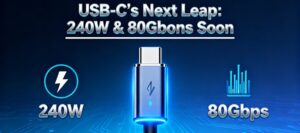A medida que evolucionan las tecnologías de visualización, resulta fundamental comprender las diferencias entre las interfaces de vídeo tradicionales y las modernas. Este análisis examina VGADVI y DisplayPort-tres normas fundamentales que dan forma a la conectividad visual- para aclarar sus disparidades técnicas y casos de uso óptimos.
Consideraciones para el futuro
DisplayPort domina los ecosistemas modernos gracias a su escalabilidad y a la convergencia USB-C. Mientras que DVI persiste en entornos profesionales especializados, VGA está en gran medida obsoleto fuera de los escenarios de retroadaptación especializados.
Conclusión
DisplayPort se perfila como la opción definitiva para las demandas de alto rendimiento, mientras que DVI responde a necesidades transitorias. Las limitaciones analógicas de VGA la relegan a sistemas heredados. Alinee su selección con los requisitos de resolución, las frecuencias de actualización y las prioridades de integración del ecosistema.






